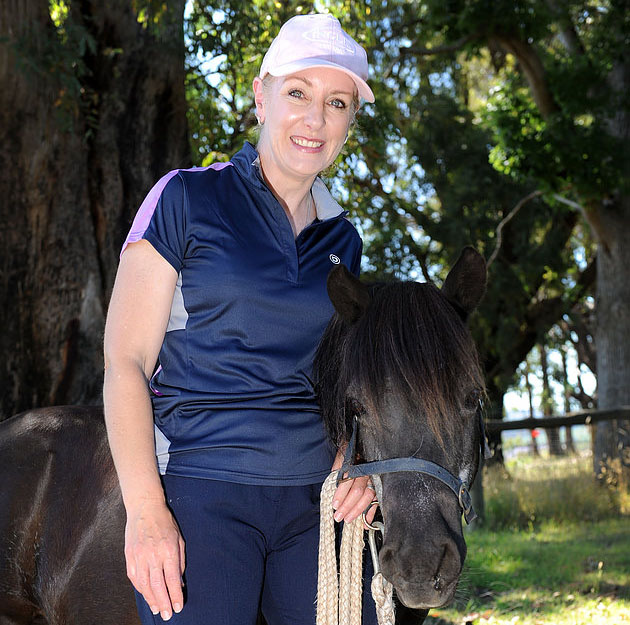Horse owners need to be aware and plan early on days of high bushfire threat to avoid the heartache of losing beloved livestock.
Callignee horsewoman Deslea Tulloch was at home with six horses and two small boys on the morning of Black Saturday before she packed up and left early.
She had prepared by opening all the internal paddock gates, so the horses could navigate their way around the property while two Shetlands were left in a sheltered yard.
“Our ponies China and Fairly were in a shady small paddock under oak trees, at the time, I thought this was the best place for them with plenty of shade and water,” Ms Tulloch said.
The fire destroyed everything.
The horses who had free access around the property were able to escape with minor singes, however, the two ponies were not so lucky.
“China and Fairly couldn’t escape. Fairly had lung problems from smoke inhalation, and we never knew if China would make it,” she said.
China suffered severe burns up his legs which badly damaged his hooves, causing them to drop off.
China was later put down after he suffered secondary complications with new hoof growth.
Fairly suffered heat spots on her hooves and her mane and tail were burnt off. Black hair burnt from her face grew back white.
Traralgon CFA officer in charge Emma Conway said planning was essential and arrangements should be put in place well before the fire season.
She also urged property owners to ensure house numbers were clear and obviously located so firefighters didn’t waste time looking for a property.
“If it’s going to be a code red or extreme fire day, move horses the morning, or day before. If your property is on the edge of a high fuel area, take your own situation into account,” Ms Conway said.
“Horses are not something you can move easily. Networking is the best bet, planning is the best way to ensure everyone’s survival.”
The CFA has a fact sheet for horse owners and bushfire. There is also a National Equine Database for the horse community to network and offer evacuation properties in emergencies while the Gippsland Horse Safe – Bushfire Assistance Facebook page allows locals to share ideas and pass on messages about keeping safe.
Ms Conway said people should move horses to a bare, eaten down paddock, left with water, so that there was no fuel under their feet.
“Shade trees are fine if there is no fuel underneath, such as long grass or dropped branches. The longer the grass, the higher the flames, which will force horses to run into fences. “If you don’t have a paddock like this, agist them in an area that has, and this should be arranged in advance.”
Take all rugs, cotton sheets, fly veils and halters off horses. These can melt to the horse. If a halter must be left on, make it leather, but the metal rings can still heat up and burn.
CFA advice also includes writing phone numbers clearly across the horse’s body with a livestock pen, as some horses will be spooked and can’t be safely approached.
Ms Conway said opening gates, or cutting internal fences, would let horses find their own way out of trouble, but she said never let them out onto the road, or leave boundary gates
open.
“We don’t want horses on the road, it’s a risk to the public, and if the horse gets collected by a fire truck – it will get killed.”
She said if horses do get injured, run burns under cold water and call the vet.

